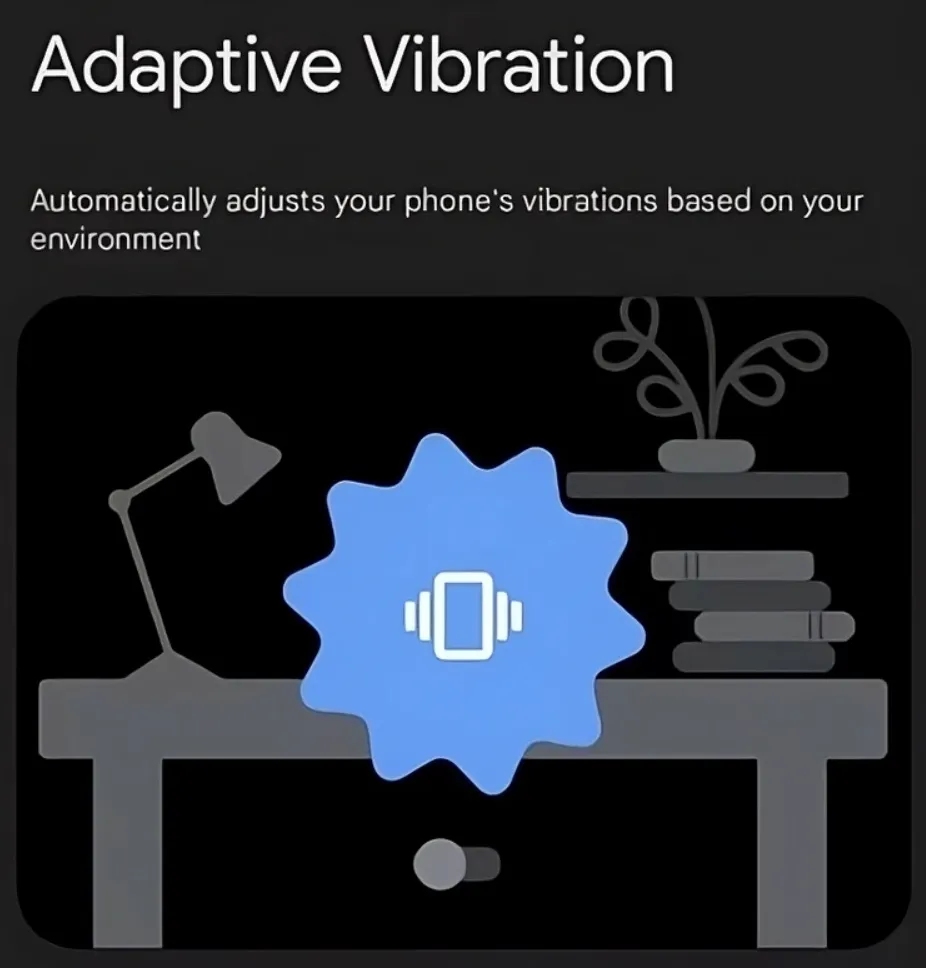Readers like you help support Explaining Android. When you make a purchase using links on this site, I may earn an affiliate commission.
Have you ever had your phone sitting on the desk (or a countertop) only to then receive a notification that startled you because the phone vibrated so much? You are definitely not alone and Google has finally added a feature to Android to help in these situations.
With the launch of Android 15, we now have a new feature within the Sound & Vibration Settings menu to help.
Adaptive Vibration in Android Beta
This new Adaptive Vibration feature was first spotted in a beta release of Android 15. However, the feature ended up working a bit differently then. As we can see from the image below, this feature was first intended to monitor your surrounding environment. It was originally supposed to use your sensor and the microphone to check and see if you were in a quiet area or not.

If everything was quiet, then the vibration of your notifications would be reduced.
But if the phone detected that things were loud (maybe you’re in a crowd or the TV was turned up), then it would increase the vibration strength.
I have not been able to find an official response from Google as to why they decided to change things up. But with Android 15 installed on my Pixel 8, this Adaptive Vibration setting had changed. If I had to guess, I would say that Google found using the microphone to monitor your surroundings used up too much battery. Then again, it’s possible that beta testers were worried about the feature being enabled for privacy reasons.
Then again, the increase in vibration strength may not have been enough to make a difference.
So instead of promising to help make it more noticable, they paired the feature back so that it will only reduce the strength of the vibration when it’s still and the screen is face up.
How to Enable Adaptive Vibration in Android?
Because that is how the feature is implemented now.
You can enable the feature by following the steps below…
- Launch the Settings application.
- Scroll down and tap the Sound & Vibration option.
- Then scroll down again to select the Vibration & Haptics menu.
- And finally, toggle the Adaptive Alert Vibration feature on.
Adaptive Vibration on Android will be disabled by default since Google does not want this to be enabled out of the box. At the end of the day, your OEM wants you to receive the notification alert since it can be important. It’s only for those people who are aware that the feature is on, that it truly becomes useful for the user.
Android 15 Adaptive Alert Vibration
Here is a video guide I created for those who may want to see where the feature is located before trying to find it.
Conclusion
Honestly, I think the original implementation of this feature would be more useful. However, I did not have enough time to fully test this specific feature during the Android Beta program. So I am unsure if it worked as intended. We have to remember that beta test happen for a reason.
While it may have seemed like a good idea on paper, it may not have been good enough to release in the stable build.
So, if you were able to test this feature yourself, I would love to hear what you thought about it down in the comments section below.

